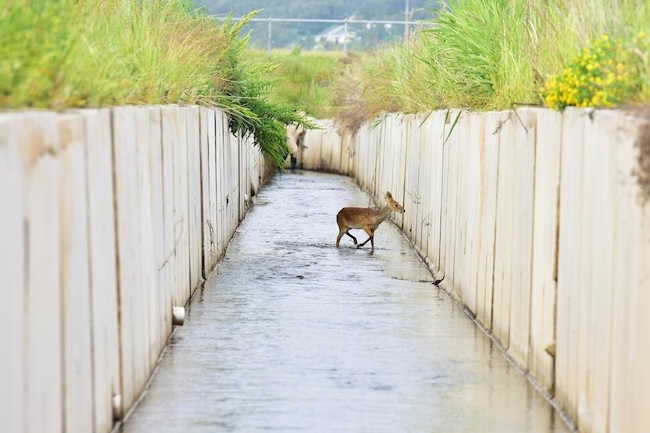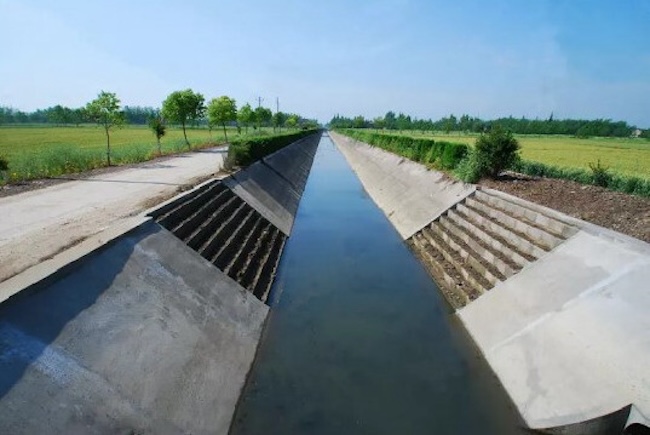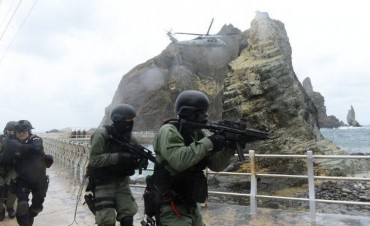
Large agricultural waterways are turning into lethal traps for wildlife such as water deer and raccoons. (Image courtesy of Chungnam Wildlife Rescue Center)
DANGJIN, Mar. 4 (Korea Bizwire) – Large agricultural waterways are turning into lethal traps for wildlife such as water deer and raccoons, despite laws enacted last year mandating the creation of escape routes.
In a recent field report from Dangjin, South Chungcheong Province, the harrowing sight of a water deer trapped in a concrete canal over 2 meters deep underscores the gravity of the situation. Seeking water, the animal had fallen in and, without a means of escape, was left in a dire predicament.
Local farmers, empathetic to the animal’s plight, find themselves helpless. “It’s heartbreaking to see, and I want to help, but these animals are not easy to catch,” shared one farmer, reflecting the challenge of rescue efforts.
Rescue teams often struggle to capture the swift and frightened animals, and in South Chungcheong Province alone, the past two years have seen the rescue of 97 water deer and 12 raccoons from such canals, returning them to the wild. However, without timely rescue calls, many animals face certain death.

The Wildlife Protection Act last year mandates the inclusion of escape routes in new irrigation canals. (Image courtesy of the Ministry of Environment)
“Unless slopes are constructed in these canals, we foresee a continual loss of wildlife,” stated a rehabilitation manager from the South Chungcheong Wildlife Rescue and Treatment Center.
A beacon of hope shines in Yesan, South Chungcheong Province, where no trapped water deer have been reported in the last four years, thanks to the installation of 24 escape routes along 20 kilometers of irrigation canals, allowing animals like roe deer, frogs, and snakes to find their way out.
Despite the implementation of the Wildlife Protection Act last year, which mandates the inclusion of escape routes in new irrigation canals, there’s no requirement for existing structures to be modified.
The Ministry of Environment conducts annual damage surveys and requests improvements from canal management agencies, but without penalties for non-compliance, the effectiveness of these measures remains uncertain.
Lina Jang (linajang@koreabizwire.com)






